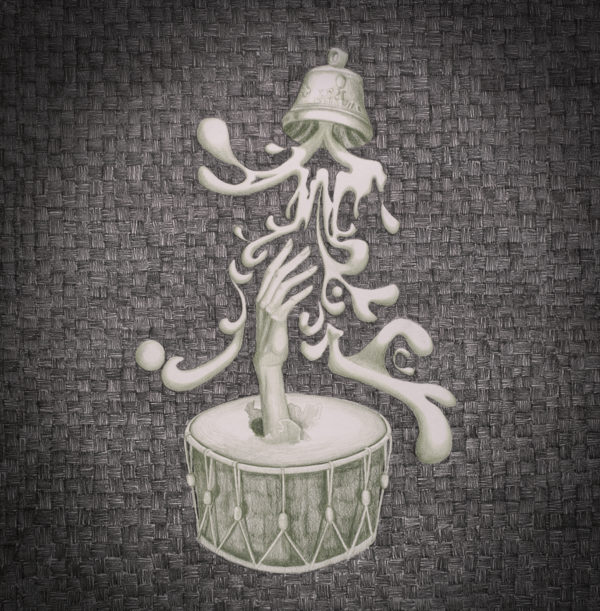Paul Frehner, composer
Cloak of 'Allophenia, for Orchestra

Milk of Paradise, pencil crayon drawing by Meghan Frehner (2022)
Program Note
Cloak of ‘Allophenia, was commissioned by the Victoria Symphony for their concert entitled “Our Canada”, an event celebrating Canada’s sesquicentenary.
In thinking of a starting point for this composition many options presented themselves: would I relate the piece to Canadian literature, Canadian music, the Canadian world perspective, the Canadian national perspective (that would be interesting coming from a native Quebecker), hockey, the landscape, the history of Canada, hopes for Canada’s future or anyone of a multitude of other possibilities? In the end I decided to reflect on the multicultural experience of contemporary Canadian life.
Growing up in Montreal it was clear that the city and the surrounding region had a significant level of social complexity with varying shades of harmony and dissonance. There were the English and French, two populations whose inter- relations had some deep-seated issues that needed to be worked out and that are still being worked out. The political and cultural climate of Montreal was also informed and affected by its evolving relationship with its First Nations neighbours, in particular the Mohawk people of Kahnawà:ke and Kanehsatà:ke. Then there were the mysterious allophones, which were frequently spoken about in the media. To most of the world an allophone is a speech sound that represents a single phoneme (for instance, the phoneme /t/ has six possible allophones depending on the context). In Quebec, however, an allophone is an immigrant whose native language is neither English nor French. Based on this Quebecois definition, my father is an allophone, having emigrated from Germany in 1956. On one hand, I found it strange that in Quebec people of any number of different ethnic and linguistic backgrounds could be thrown into the same statistical melting pot. On the other hand, while growing a good number of my posse were allophones, so it sort of made sense too.
I see Cloak of ‘Allophenia as a musical metaphor for Canada’s embrace of people of many cultures, races, religions and customs. Musically, the piece has an overarching melodic theme, which is symbolic here of our national identity that binds Canadians from coast to coast to coast together. The theme is quite chromatic, reflecting on the diversity of the peoples that make up our nation. Each time the theme returns it is in a different musical guise, once again emphasizing our diversity. In the theme’s first appearance it is the subject of an imitative contrapuntal texture, referencing the compositional practices of our European forebears and, by extension, the European origins of the symphonic orchestra. The theme’s next appearance is in the second section, which sounds like a slow, stylized ethnic dance, replete with obbligato solo clarinet and violin parts over a jazzy walking bass line. In this section the theme is played in the background by the trombones. The third section of the piece is quicker in pulsation. Here, the main theme makes two appearances, once played by the solo clarinet and the second time played by the strings and trumpets as the piece moves toward a celebratory climax.
Cloak of ‘Allophenia gives a clin d’œil in tribute to Rush, one of my favourite Canadian bands, the members of which had recently retired from performing. A few of the musical motifs in the piece stylistically allude to snippets from their songs. There is also a musical nod toward the city of Victoria in the third section of the piece, where the rhythm of one of the main motifs is derived from the Morse code spelling of YYJ, the airport code for Victoria International Airport. Of course, Rush famously derived a rhythmic motif from the Morse code spelling of YYZ, the letters for what was then called the Toronto International Airport.
Funding for the composition of Cloak of ‘Allophenia was generously provided by a private individual.